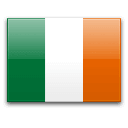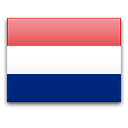 Thorlux is closed for the Christmas break and will re-open on Thursday 2nd January 2025. Merry Christmas!
Thorlux is closed for the Christmas break and will re-open on Thursday 2nd January 2025. Merry Christmas! 
Hazardous
Hazardous areas encompass locations where an explosive atmosphere may exist, either permanently because of the materials being stored or used as part of the manufacturing process, or occasionally caused by leaks or spillage.
The explosive atmosphere may be caused by flammable gases or vapours, or by combustible dust (either as dust in the atmosphere, or as a layer of dust).
Disclaimer. The information on this page is provided as an overview for general guidance only. It must not be used for decision-making and expert opinion must be sought.
ATEX
ATEX is the name commonly given to the two European Directives for controlling explosive atmospheres:
- Directive 99/92/EC (also known as 'ATEX 137' or the 'ATEX Workplace Directive') is for Employers and provides standards on minimum requirements for improving the health and safety protection of workers potentially at risk from explosive atmospheres.
- Directive 94/9/EC (also known as 'ATEX 95' or 'the ATEX Equipment Directive') is for Manufacturers and provides guidance concerning equipment and protective systems intended for use in potentially explosive atmospheres.
ATEX is applicable across the EU, so removes the need for national standards, and consequently for manufacturers to seek testing and certification in all Member States. Detailed guidance is provided on the Health and Safety Executive website.
DSEAR
DSEAR stands for the UK Government ‘Dangerous Substances and Explosive Atmospheres Regulations 2002’.
DSEAR puts a statutory duty on employers to protect their employees from risks to their safety in the workplace, and to members of the public who may be put at risk by work activity.
Detailed guidance is provided on the Health and Safety Executive website.
What are dangerous substances?
Dangerous substances include anything used or present at work that could, if not properly controlled, cause harm to people as a result of a fire, explosion or corrosion of metal. They can be found in nearly all workplaces and include such things as solvents, paints, varnishes, flammable gases, such as liquid petroleum gas (LPG), dust from machining and sanding operations, dust from foodstuffs, pressurised gases and substances corrosive to metal.
Choosing luminaires for hazardous locations
A number of steps are involved in establishing which luminaires are suitable for any given application:
- Determine the Zone Classification
- This will inform the choice of Equipment Classification
- Determine the Temperature Rating that is needed based on the Temperature Classification of the dangerous substances that are present
- Determine the Protection Concept that is needed
Suitable luminaires can be selected based on these criteria.
Hazardous Areas
It is the employer’s responsibility to determine the classification of the area. Hazardous zones are defined by the duration for which the explosive atmosphere exists.
Gas, vapour and mist
- Zone 0. The explosive atmosphere is present continuously, or frequently and for long periods.
- Zone 1. The explosive atmosphere is present occasionally in normal operation.
- Zone 2. The explosive atmosphere exists for short periods only. It is not normally present but may exist as a result of leakage, spillage or when maintenance work is undertaken.
Dust
- Zone 20. The explosive atmosphere is present continuously, or frequently and for long periods.
- Zone 21. The explosive atmosphere is present occasionally in normal operation.
- Zone 22. The explosive atmosphere exists for short periods only. It is not normally present but may exist as a result of leakage, spillage or when maintenance work is undertaken.
Equipment Classification
Equipment is classified by the degree of safety of the product.
- Category 1 equipment is suitable for Zones 0/20
- Category 2 equipment is suitable for Zones 1/21
- Category 3 equipment is suitable for Zones 2/22
Temperature Rating
Luminaires must have a temperature rating to ensure the maximum operating surface temperature of the luminaire will not ignite the atmosphere by contact.
Temperature Classifications
Temperature Classifications are available for a wide range of gases and dusts, and the luminaire temperature rating must be lower than the Temperature Classification of the substance present.
| Temperature Class | Maximum surface temperature °C |
|---|---|
| T1 | 450 |
| T2 | 300 |
| T3 | 200 |
| T4 | 135 |
| T5 | 100 |
| T6 | 85 |
*Classification of maximum surface temperature for electrical equipment IEC 60079-0
Types Of Protection
The level of protection is determined by the Protection Concept. Each is defined in the IEC standards.
| Protection Concept | Concept Letter |
|---|---|
| Flameproof | d |
| Increased Safety | d |
| Purge/pressurisation | p |
| Quartz | q |
| Oil immersion | o |
| Encapsulation | m |
| Type 'n' | n |
| Intrinsic safety | i |
Labelling
The level of protection is determined by the Protection Concept. Each is defined in the IEC standards.
| a | Name of the manufacturer (or registered trademark) | |
|---|---|---|
| b | Type identification | |
| c | Serial number | |
| d | Certificate number and issuer | |
| e | If necessary: „X“ (special conditions) | |
| f | Ex marking: | |
| f.1 | Symbol „Ex“ | |
| f.2 | Type(s) of protection | |
| f.3 | Group | |
| f.4 | Temperature class | |
| f.5 | Equipment protection level | |
| f.6 | If necessary, ambient temperature | |
| g | If necessary: further information | |
Petrochemical Industries
Access Lighting
Security and access lighting are essential as plants operate 24/7, so access for inspection, maintenance and repair may be needed at any time. Petrochemical plants are usually external, so suitable luminaires must be used.
Illumination Levels
CIBSE: SLL Lighting Guide 1 - Industrial Environment 2018 recommends 50 lux for walkways, 100 lux for external pumps and valves, 150 lux on plant items that require infrequent maintenance and 300 lux in areas that are permanently in use.
Installation is often a challenge in an external work environment without ceilings and wall so luminaires are often clamped to safety rails, stanchions and girders. Care needs to be taken to ensure the installation fixings do not compromise the rating of the luminaire therefore external fixing lugs are often used.
Food & Textile Industries
The areas where raw materials are received and initially processed often bear little resemblance to the clean and sterile environments where the final product is packaged. The basic ingredients must be cleaned and rough processed to refine out the target substance or material, so it is often dirty and dusty.
The dust from many raw materials (and the left-over waste) such as flour, sugar, cotton, rice and cocoa constitute a fire and/or explosion hazard, so suitable protected luminaires must be used. The ignition temperature for the material must be ascertained and this will guide the choice of luminaire.
Illumination Levels
CIBSE: SLL Lighting Guide 1 - Industrial Environment 2018 recommends 150/ 200 lux in the basic process areas, and 300/500 lux in areas where the final product is produced and packed.
Choice of Luminaire
All Thorlux hazardous area luminaires are classified type 'n' for Zone 2/22 environments. The FGN LED Type `N` is a corrosion resistant surface mount luminaire. The Thoroseal LED Type `N` is a high-bay luminaire with a die cast aluminium body. The Three-65 Type `N` is a self-contained emergency luminaire that can be used as an emergency luminaire with a self-adhesive legend kit.







